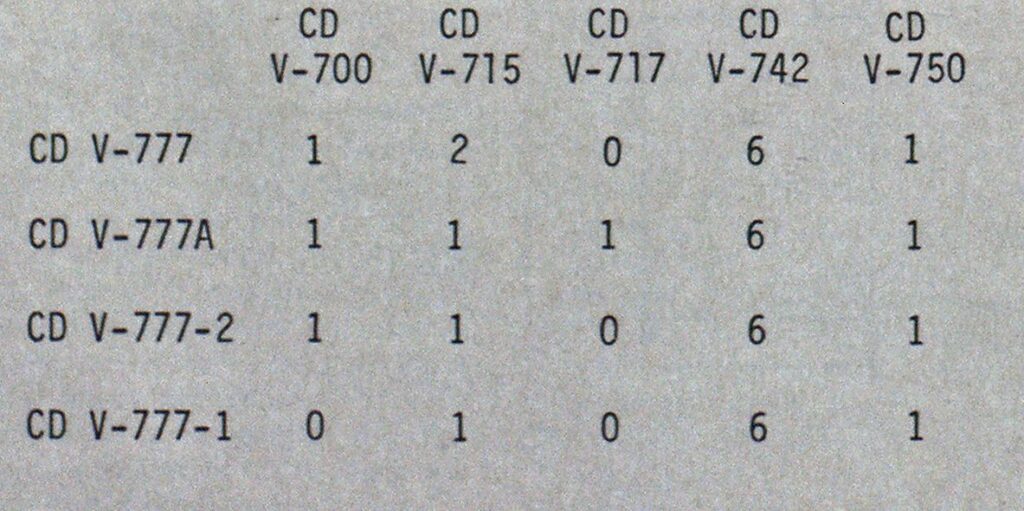
Radiological Instruments— Detectors or Dust Collectors?
SAFETY
Probably most fire departments have one or more state or federally issued Radiological Defense (RADEF) instrument sets. Depending on the particular set, it may contain a geiger counter (CD V-700), a survey meter (CD V-715 or CD V-717), dosimeters (CD V-742) and a dosimeter charger (CD V-750). (Older sets may have different range instruments.)
There are several types of instrument sets available (see table), each differing in its number and/or type of instrument. Yet, how many times have these or other sets been used in training? How many sets have been found with instruments totally inoperable because of corrosion resulting from batteries being left in place too long? How many times have batteries been found missing or dead? The answer to the first question is apt to be “not too often.” The answer to the others is probably “more often than not.”
Testing and training
There are at least two ways of overcoming the proverbial problem of procrastinating in checking and training with these instruments. The first way is to simply take the set(s) from the storage area or apparatus, conduct an inventory, and perform the indicated operational checks. (Operating instructions should accompany each set.)
Taking the time to perform the operational check of the geiger counter and the survey meter and “zeroing” the dosimeters will truly be worth the effort. There’s nothing complicated about it. It simply requires a commitment.
It’s common practice with some departments to carry these sets on the engine company, truck company, rescue squad or command vehicle. Under this arrangement, it is important to protect the sets from road shock and inclement weather.
Some fire departments carry CD V-777 sets on the apparatus and maintain the CD V-777A. set in the stations. Departments having hazardous materials response teams should consider carrying a CD V-777A set (in addition to other sets), since it contains a CD V-717. This instrument which has a detachable ionization chamber that can be located 25 feet from the meter, could be quite useful at the scene of a radiological accident. Placing the chamber at a selected monitoring point would permit the person operating the instrument to receive the benefit of the additional protection afforded by the greater distance between the chamber and monitoring station. (The specific number and types of sets issued to the fire and rescue departments throughout the United States can vary, depending on local, state or federal preference.)
After becoming familiar with these instruments insofar as inventory and operational checks are concerned, schedule training sessions to share this information with other members of your department. Following this fundamental review, invite a representative of your state radiation emergency assistance team, a health physicist, or another member of your community who has expertise in the area of radiation to come and discuss this subject in more detail.
A formal radiological training program could also be obtained through your state civil defense and emergency preparedness agency. This course provides students with background information about radiation including the common types, principles of protection and the use and limitations of the radiological instruments. Students are provided with an opportunity to operate instruments while performing a number of exercises designed to build confidence and competence. Cobalt 60 or cesium 137 training sources are often used as part of these exercises.
TYPE OF RADEF SETS ISSUED
SET CONTENTS

Use of instruments
Although RADEF instruments are not nearly as accurate as the more sophisticated and costly units used by health physicists and radiation personnel, they are immeasurably more accurate and reliable than the five human senses.
Should an accident involving radioactive materials occur on a highway in your response district, using the RADEF instruments could give an indication of the magnitude of the problem. Of course, there are a number of factors influencing the response of these instruments including the type and intensity of radiation present; the condition and limitations of the radiological instruments; and the training level of the person(s) using them.
Even though there are agencies available at the local, state and/or federal level to respond to incidents involving radioactive materials, including highway accidents, their response time is likely to be much greater than that of the local fire department. Recognizing that the actions of a fire department at the scene of such an emergency are initial and temporary until technical assistance arrives, they are nonetheless extremely crucial to the situation at hand. In fact, these actions set the stage for future strategies and tactics.
Without some means of determining whether radiation is present and to what degree, decision-making efforts of fire and rescue personnel is likely to be hampered. The fear of the unknown coupled with common misconceptions concerning radiation could lead to the decision to not approach vehicles involved in an accident, even though one or more persons may be trapped and seriously injured.
It is openly acknowledged and recognized that there is much more to handling an incident involving radioactive materials than just knowing how to use the instruments, but it’s a start—and a very important one.
Hopefully the subject of radiation and the use of radiological instruments are included in your department’s training program. However, if the instruments are just collecting dust in a corner somewhere, check and begin training with them. You’ll never know when you may be called upon to use them.


